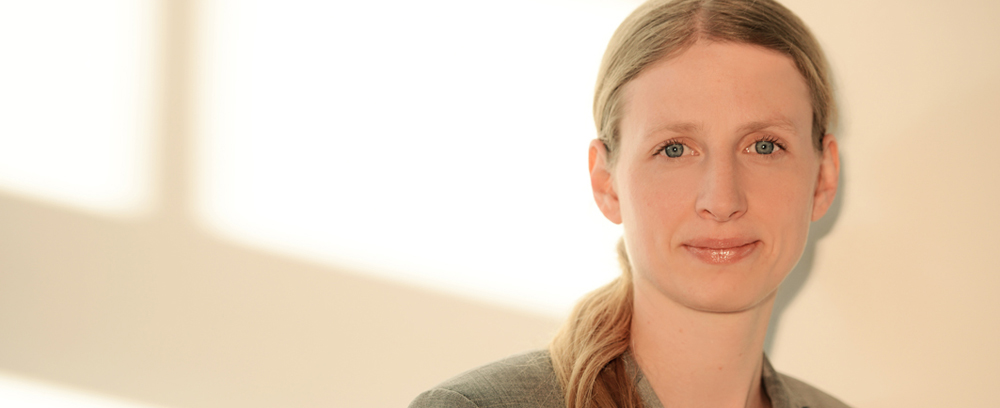
Emmy Noether Group for Physicist
Calculating the perfect material
- von Birte Vierjahn
- 25.02.2019
Generating electricity from heat differences or mechanical energy has been possible for a long time. But the materials required are usually expensive, rare or toxic. Physicist Dr. Anna Grünebohm from the University of Duisburg-Essen (UDE) researches harmless and easily available alternatives. She has succeeded in recruiting one of the coveted Emmy Noether junior research groups, and will be funded with more than €1.3 million for six years
The material class Grünebohm works with is oxides with a perovskite structure. That sounds complicated but it can simply be imagined as a Lego kit: the underlying crystal structure remains the same, but individual atoms can be exchanged and properties can be specifically designed.
Many of these materials can be electrically polarized permanently and also have other properties that make them promising candidates for sustainable technologies: For efficient cooling with electricity, the use of waste heat or the short-term storage of electrical energy, to name just a few examples.
But the necessary features are sometimes difficult to set as a combination: "The greatest temperature changes possible, for example, often occur at more than 100°C and in thin films. For many cooling applications, however, one would like to reach room temperature. In addition, you need more material for a large cooling capacity, so that you cannot work with the ideal thin layers," Grünebohm explains. With homogeneous materials, this tightrope walk is difficult to impossible.
In her working group "Scale-bridging computational design of multifunctional ferroelectric composites", the 35-year-old therefore researches nanomaterials consisting of thin layers with a thickness of just a few atoms or materials containing tiny inclusions. Not only can the different properties of the subsystems be combined in a completely new way, the interfaces also provide exciting new functionalities.
Grünebohm's field is theoretical physics; it works with simulations that have great predictive power. To put it simply, she can use the computer to design an ideal material that will later serve as a blueprint for other scientists. In spring, her group will start with two PhD students within the "Materials Chain" flagship program of the University Alliance Ruhr.
The Emmy Noether Program of the German Research Foundation (DFG) enables up-and-coming young scientists to qualify for a professorship by leading a junior research group.
Further information:
Dr. Anna Grünebohm, Faculty of Physics, +49 203 37-94271, anna@thp.uni-due.de
Editor: Birte Vierjahn, + 49 203 37-98176, birte.vierjahn@uni-due.de
Post-Views: 6874
